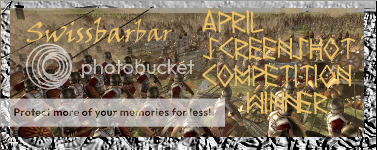Where to start?
Good intro level sources include:
Collis, J. (1998).
The European Iron Age. Routledge: Britain
Cunliffe, B. (1997).
The Ancient Celts. Penguin: Britain.
A brilliant reference is:
Green, M.J (ed). (1995).
The Celtic World. Routledge: Britain.
I can't recommend that book enough. It is absolutely excellent. It's currently my bible. And it's also really useful as a doorstop and to crush large vermin with (its massive).
Failing that, the wiki page on ancient celts and gauls ain't all that bad. I know that some people hate wiki, but for a basic gist of an idea or broad info, wiki is quite good. I wouldn't use if for a paper but hey...
In terms of fighting styles and skills there isn't much. What follows is rather disjointed, and contains a large amount of theory and personal opinion:
There are not really any written sources for combat techniques until the manuals of the 14th Century such as Tallhoffer. These manuals were used by teachers to help teach students (ie, young nobles and knights in training) how to fight with weapons such as the longsword, shortsword, axe, polearms, dagger and unarmed combat. There were several schools of thought on how to fight, mainly an Italian school and a German school. Before that period, there is little information on true combat training. A group of early medieval reenactors/reconstructionists/experimental archaeologists have however used a combination of Tallhoffer and the Icelandic sagas to create an experimental model of how viking age warriors may have fought. Turns out it is a relatively effective body of techniques. videos of demonstrations of some attacks and counters can be found at:
https://www.youtube.com/watch?v=R8SRaa33otU. In addition, the Hurstwick reenactment group also have experimented with Tallhoffer:
http://www.hurstwic.org/history/arti..._technique.htm. Of course, neither of these deal with the Iron Age.
An Italian group have attempted to recreate an Iron Age combat style. I'm not sure how they went with it though. I've also spoken to some Iron Age reenactors. They say that one of the major elements of combat is the size of the shield. While not relatively heavy, it is cumbersome and awkward, meaning it is often easier to dodge blows than block them. This is however, based on modern people taking part in a combat sport. (please note that I'm not bagging reenactors. I myself was a viking reenactor and am now getting into iron age reenactment).
Now my opinions:
1. No warrior culture will survive long if the basic training consists of "clobber that guy as hard as you can". All warrior cultures seem to have a strong and underlying teaching and training framework to create warriors that fight in a particular style using particular techniques.
2. Celtic combat may have consisted of wide swings with long and heavy swords. Don't dismiss this as primitive fighting though. The Celts, as a culture would have realised two things: their soldiers were big and strong, and they were excellent metalsmiths, allowing them to create swords of that type, thus allowing them to fight in their manner.
3. Roman and Greek writers frequently mention not only the ferocity of celts but also their prowess and skill in battle.
4. celts were frequently used as mercenaries and auxilia. They wouldn't have been used if they weren't good.
In addition, there are also the modern Celtic martial arts of Scotland and Ireland (can't remember what they're called). While (relatively) modern, and not ancient, they are fully formed and functioning martial arts, distinct from eastern martial arts and created by the descendants of the iron age celts (or at least descendents of their culture. lets not get into genetics here)
Hope that made sense.
Hodgson



 Reply With Quote
Reply With Quote
 x 15
x 15



 lol to get the info
lol to get the info 





 the galatikoi makes for good heavy infantry in the makedonian army...Of course thats after they're punished for raiding the makedonian tombs!
the galatikoi makes for good heavy infantry in the makedonian army...Of course thats after they're punished for raiding the makedonian tombs!






Bookmarks